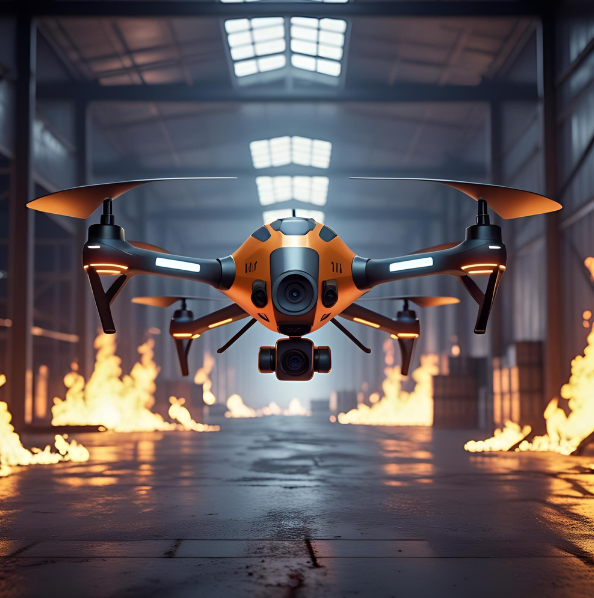IPTC researchers have developed a prototype indoor drone for emergency fire response in futuristic complex transfer stations

Researchers from the Information Processing and Telecommunications Center (IPTC) have developed a prototype indoor drone designed to enhance emergency response during fire incidents in complex, futuristic transfer stations. These modern stations, which integrate multiple transport modes and accommodate large numbers of passengers, present unique challenges for emergency management due to their intricate layouts and potential for high-risk situations.
The drone utilizes advanced positioning technologies, such as Ultra-Wideband (UWB) real-time location systems and altitude sensors, enabling precise navigation even in GPS-denied indoor environments. It is equipped with ultrasonic sensors for obstacle detection, ensuring stable flight and effective operation despite reduced visibility caused by smoke or steam during fire emergencies. The compact and robust design allows the drone to manoeuvre through narrow corridors and withstand minor collisions, making it particularly suitable for the demanding conditions of indoor rescue missions.
Initial tests demonstrated the drone’s ability to maintain stable flight and accurately relay the location of fire incidents to emergency responders. Improvements in processing speed and sensor integration have further enhanced its responsiveness and operational reliability. However, further optimization is required to extend flight duration to meet practical emergency needs.
Potential applications of this research include rapid localization and communication of fire sites within large transport hubs, supporting faster evacuation and more efficient firefighting interventions. Technology could also be adapted for use in other complex indoor environments, such as shopping centers, airports, or industrial facilities, where traditional emergency response may be hindered by architectural complexity. This work positions IPTC at the forefront of innovative safety solutions for next-generation urban infrastructure.
Bibliographic references: Carramiñana, D., Rey, L., Arranz, R., Besada, J.A. & Bernardos, A.M. (2025, 19 – 21 February). An AI-assisted Multi-drone Architecture for Surveillance Operations. In Proceedings of 1st International Conference on Drones and Unmanned Systems (DAUS’2025), Granada, Spain, pp. 216 – 221. http://dx.doi.org/10.13140/RG.2.2.18747.94240
Forwed information: www.iptc.upm.es
Share this:
Latest news



Categories

